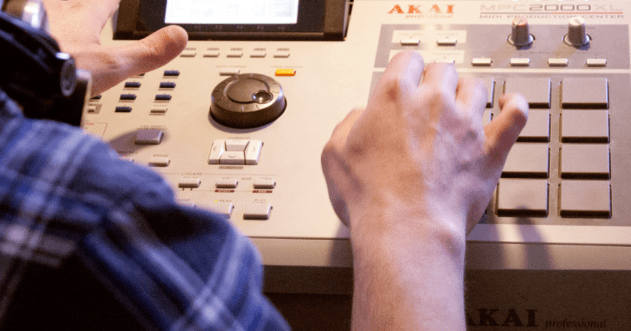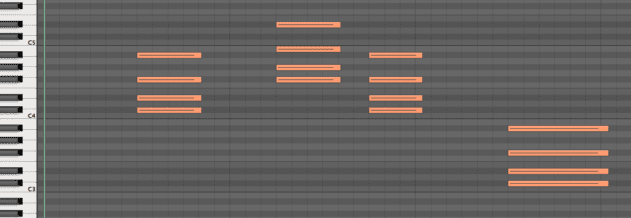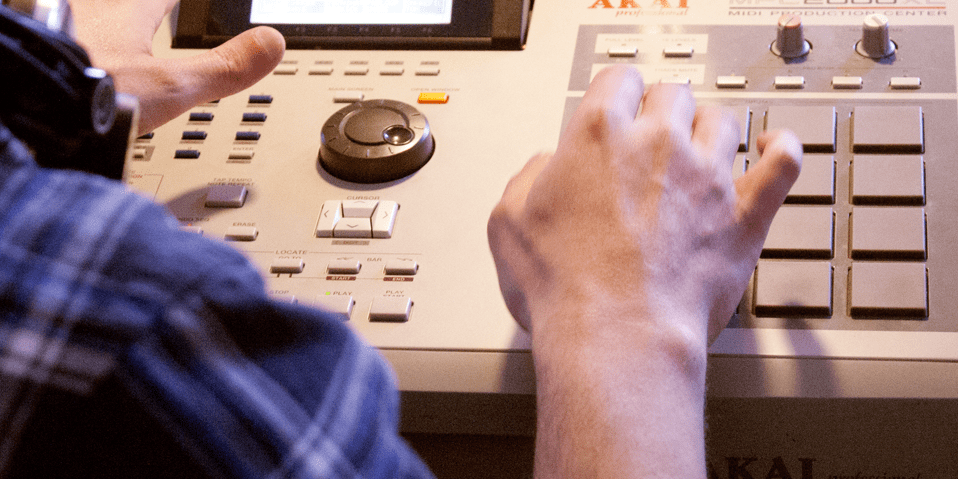Our resident music theory expert Oliver Curry explains how sampling chords can add timbral complexity, distinctive harmonic character and a healthy pinch of old-school flavour to your tracks.

Sampled chords are a key component of countless techno and deep house tracks, but the whole idea of sampling a chord then replaying it at different pitches might initially seem a little strange. Why not just play the chord with a real instrument? Wouldn’t that give more flexibility?
To understand why the technique became popular, we have to look back to its roots in the mid 1980s. Rather than one definitive reason why so many producers adopted this technique, there are a handful of overlapping, related causes. Firstly, many early house producers didn’t necessarily have the keyboard skills to play complex chord progressions manually and sequencing technology was in its infancy.
Secondly, in the days when gear was relatively much more expensive than it is now and the days of soft synths and virtually unlimited multi-track recording were a distant dream, loading synth sounds into a sampler freed the synth up to play another part.
Thirdly, chords could be sampled from existing tracks (often jazz, funk or soul records), capturing some of the sound of the existing recording.
Finally, although it’s a subtly different sound and technique, it’s worth mentioning that a number of affordable 80s synths including the Roland Alpha Juno and Korg Poly-800 featured ‘chord memory’ functions which allowed chords to be played with a single finger (a technique which became particularly popular in rave and hardcore in the late 80s and early 90s).
At the most basic level, sampling a chord from an existing track or from a synth or acoustic instrument can be a great way to play otherwise difficult or unusual progressions. However, as we’ll also see, the technique also introduces a distinctive sound as the chord gets pitched up and down the keyboard.
Bicep – ‘Feel It’
For an excellent example of sampled chords in action, let’s start by listening to Bicep’s ‘Feel It’, released as a free download last summer:
The track samples a minor 7 chord at Eb (it sounds as if it’s most likely voiced with the minor 7th, Db, as the lowest pitch of the chord, then Eb, Gb, Bb). We can hear that throughout the track the chord switches from Eb minor 7 to identically voiced Ab minor 7 chords either side of it. Pictured below is a piano roll of the chords played at 2:50. You can see how the intervals between notes are identical.

Here’s how the chord sequence sounds when played in using a basic organ patch:
Audio PlayerHowever, in the track we can also hear how the timbre of the chords played is affected as the sampled chord gets pitched up and down. This is most obviously apparent at 3:19, when the chords descend in pitch without the drums and bassline. Note how the sampler slows the recorded sound down in order to reduce the pitch, introducing a grainy feel and slowing the envelope of the sound.
As the sampler pitches the audio further away from its original pitch, the harmonics are shifted accordingly, resulting in a very distinctive sound. While the same chord progressions could be played in or sequenced on the original synth, it’s this harmonic shift that provides chord sampling with its unique feel.

09.27 PM
Another awesome article!! Thanks!
Just wanted to mention that I believe the Juno-60 was the first synth to introduce the chord memory feature. Although it is not specified in the user manual, one can play any chord with one finger over an octave, using some kind of “hack”.
07.44 PM
man i love this site!just gets better and better!
10.34 AM
Yes! Great article. It answers a lot of questions I always had and never figured out!
10.44 AM
Love the site and these tutorials!
11.38 AM
Quick question. If you sample a chord, why are you playing another chord with that sample.? Does that make sense?
11.54 AM
Ryan – we don’t quite understand what you mean. Do you mean in the Bicep example, why does the piano roll show chords being played? That’s just to demonstrate how the sampled chord progression would look.
12.07 PM
Yeh that is what I meant. So in actual fact you would just play the root key of that chord while the sample would be playing back a minor 7 I’m guessing? Thanks for clearing that up 🙂
12.10 PM
You got it. So in that example you’d sample the Ebm7 chord, set the original pitch in your sampler as Eb, then you’d play a C for Cm7, D for Dm7 and so on…
12.13 PM
Yep perfect! Thanks, just started to confuse myself for a moment there. Haha
01.20 PM
Great article! I will be trying this technique tonight!
06.08 PM
Awesome article! Attackmagazine is becoming a more and more important resource for me as a newcommer to production. =)
I’ve been playing around with this technique and getting some really interesting results. Thanks again and great work.
09.03 PM
I have learnt a shed load of stuff reading these articles.
Brilliant layout and examples.
Thank you very much.
04.02 PM
Hi,
Thanks for posting this article and for the whole site, what a revelation this is…
My question is simple –
If you run the technique of sampling a chord and then running it up/down the sampler – aren’t bound to be seriously off-key?
I mean a Major/minor scale has a limited amount of Major/Minor triad chords, not to talk about 7…
Thanks,
SkyLarking
04.32 PM
SkyLarking – yes, exactly right. As we mention on pages 2 and 3, it can be tricky to stick to conventional scales and keys with this technique, but that’s partly why it sounds so distinctive.
05.52 PM
Hi,
Sure…
So, any tips on running out of key but still playing it safe, or just do it by the ear and see what happens.
The latter method usually keeps away the more “musical” crowed, I believe…
Sky
12.38 AM
i just discoverd this site and i think this section is fuckin great! loving everything i read so far
04.03 PM
Hi – I also want to say that I find this site to be superb and the tutorials here are great. This is probably the best tutorial I have come across regarding this subject, but I am still left with a question that SkyLarking also poses.
I think resampled chords sound great and I’d love to use them more but I’m also worried about things like bass lines and melodies falling out of key with them. I understand basic music theory enough that it worries me.
Could you give us any tips on at least trying to stay in key with resampled chords, or is it literally just a question of using your ear?
03.31 PM
@ SkyLarking and ChelskiBoy
You both seem to be approaching this from the same angle, worrying about the ‘rules’ of music theory. That’s totally understandable. Those rules exist for a reason – they’re shortcuts to the accepted standards of what sounds ‘right’ based on centuries of western musical tradition. But, as with any discipline, music sometimes (but not always!) works best when you break a few rules. The Theo Parrish track is really a great example here – if you try to analyse that progression in theoretical terms you’ll probably determine that it’s a complete mess, but in context it works well.
However, we understand that the ‘if it sounds right it is right’ answer isn’t always satisfactory (and it’s used far too frequently as a cop out by journalists who are out of their depth or can’t be bothered to explain the subtleties of a subject).
However, this isn’t a black and white issue. You don’t just have to make a choice between staying in key or following your ear. You can do both. There’s a simple solution which allows much more control: sample more than one chord. For example, sample a minor chord and a major chord. That way you can get some of the pitched-up-and-down timbre and character of sampled chords while retaining more control over the scales your melodies and basslines can fit into without clashing.
04.56 PM
Great insightful read!
08.32 PM
Man, you’re really doing a good job here. I’ve been trying to tell people for ages that this was how ti was done, but nobody believed me. The house producers of the 80’s had limited studio gear, often no synth that had polyphony, but samplers were abundant. Great article, and the fact that you drive home the words with examples is even better.
12.04 PM
Thank you so much for those informations ! I use samples but never realized that it was the difference in speed that creates and add grain to that sound I love so much !
Keep up the good worl 😉
Cheers
08.57 AM
This stuff is not only accurate, but for those of us who already been doing it, it’s good motivation to hop back on that mpc! Great job